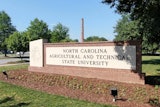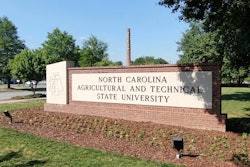A small flurry of conversation on Twitter and elsewhere followed a recent proposal by two university presidents that students seeking science, technology, engineering and mathematics, or STEM, degrees pay more tuition than those in other academic majors. While it’s not surprising that public college presidents — and indeed other policymaking officials — are seeking new and creative ways to augment an ever-dwindling stream of funds to their institutions, passing expenses on to students and their families in the form of increased tuition is damaging on many levels.
Of course, this scenario is not new. As readers know all too well, most colleges and universities have been increasing tuition by several percentage points each year, outpacing both inflation and median family income growth. According to the most recent College Board report on higher education financing, in-state tuition and fees at public four-year institutions has increased by an average of 5.6 percent each year over the last decade.
And while there is no reason to expect that this trend will end in the coming years, policymakers must take extreme caution when considering a disproportionate increase for STEM majors for two important reasons.
First, at a time when our nation desperately needs to increase its degree productivity in STEM for the sake of innovation, economic growth and global competitiveness, placing yet another barrier to higher education access and degree attainment in these fields will surely lead to further declines. The Department of Commerce and National Economic Council’s January report is the most recent in a series of clarion calls (under both Republican and Democratic administrations) pointing to an America that is losing its competitive edge in scientific and technological innovation — a key driver of wage and job growth. The report outlines three key areas for continued, significant investment, of which one is education.
Second, the need to keep higher education affordable is paramount if we are to see more students completing STEM degrees. As research in higher education has shown time and time again, the two most significant predictors that a student will not complete college are cost and academic preparation. While colleges and universities bear influence over both these factors, institutions have the most control over strategies to lessen the cost barrier.
If cost is a barrier to the average college-goer, it is even more so for students from underrepresented backgrounds who often come from low-income families. And as I’ve said here many times, while we cannot afford to turn away any student from seeking a STEM degree, institutions must be especially diligent to remove policies that turn underrepresented students away from enrolling in their STEM programs.
The reason is this: If we do not bring women, racial and ethnic minorities and low-income students into the fold, we will surely never meet America’s growing demand for STEM talent. As just one illustration of a single untapped talent pool, colleges and universities enrolled the highest ever number of Hispanic students in 2010 — more than 12 million. And yet this group continues to be underrepresented in science and engineering education and jobs. The many states looking to turn around a stagnant or declining economy by increasing their STEM workforce cannot afford to overlook their Hispanic population.
Let me address one final piece of this puzzle: the argument that since STEM grads find jobs more easily and earn higher wages than non-STEM grads (see the most recent report out of the Georgetown Center on Education and Workforce), they should pay more tuition.
This is flawed argument for a number of reasons, including the tendency to view STEM education as an individual benefit when it is actually a public good.
The argument for public and private investment in STEM education has long (and rightly) departed from this notion of individual benefit. It’s quite simple: We ALL need an America that out-innovates other countries for the sake of our economy at large. And, we ALL need this same innovation for improved health and health care, a sustainable food supply and environment and technologies that improve our everyday lives.
While STEM education may be an individual benefit, it is most assuredly a public good. For the benefit of our society at large, let us treat it as such and work to remove barriers that keep students from pursuing STEM fields.
Dr. Lorelle L. Espinosa, Senior Analyst at Abt Associates, writes about the national imperative of building and sustaining a diverse STEM pipeline.
The views expressed are those of the author and should not be attributed to Abt Associates.















